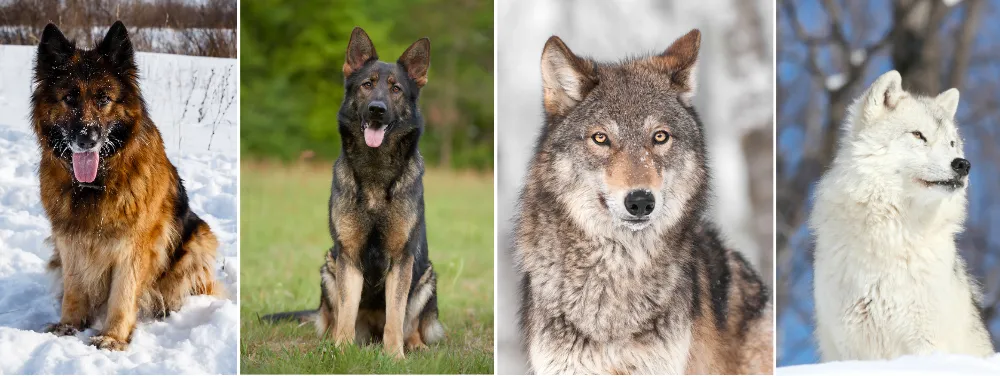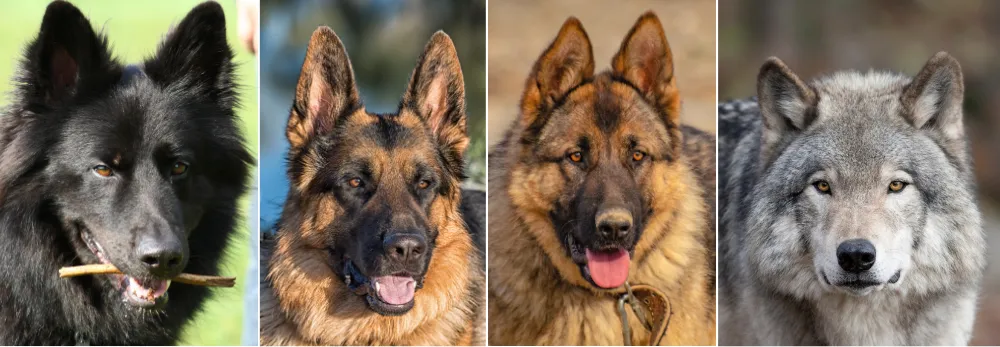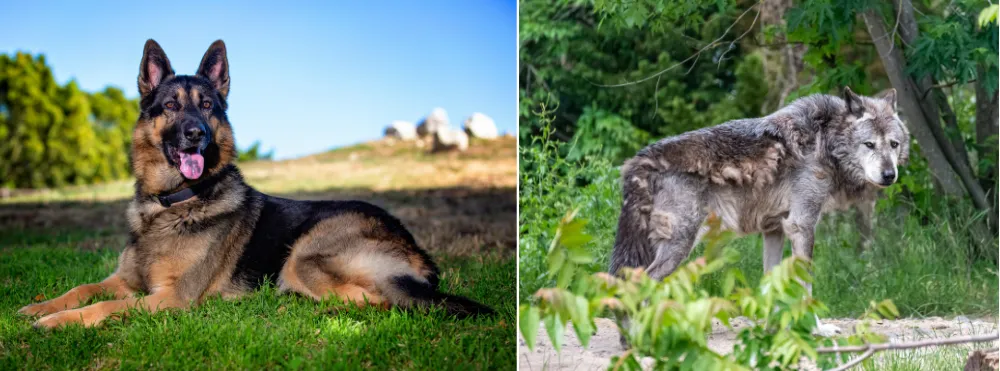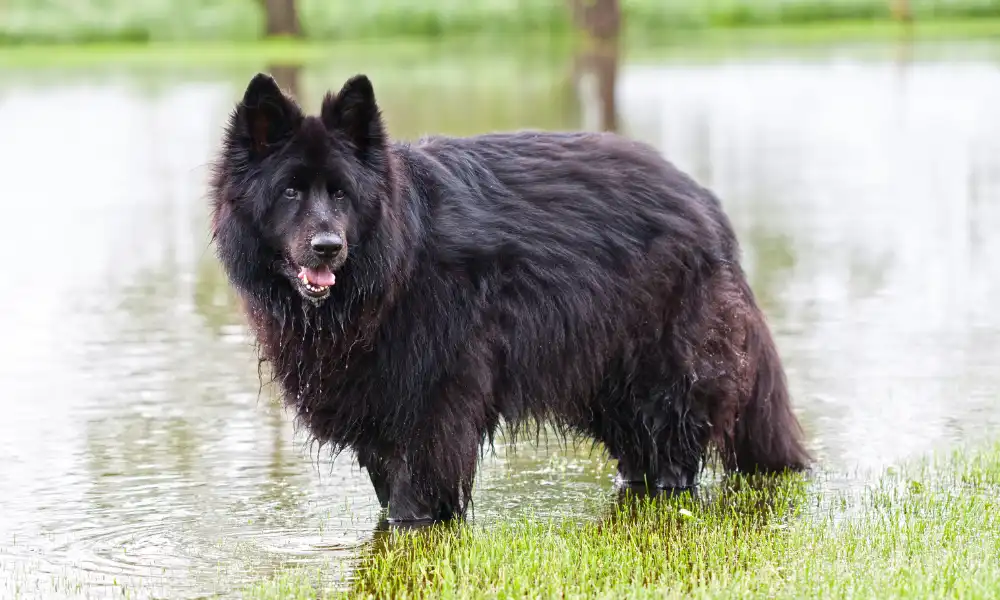Do you want to know in what ways German Shepherds are similar to their ancestors wolves, compared to other dog breeds? You’re in the right place.
German Shepherds, like other dog breeds, share a common ancestry with wolves, but they tend to retain more physical and behavioral traits from their wolf ancestors compared to some other breeds.
To know more about how German Shepherds were first created by Captain Max von Stephanitz, read this article: Are German Shepherds Descendants of Wolves?
Following topics will be covered in this post that covers how German Shepherds are similar to wolves, especially when compared to other domesticated dog breeds.
- Physical Traits
- Behavioral Traits
- Hunting and Prey Drive
- Communication and Howling
- Mental and Emotional Needs
RELATED
- How Slant (Sloped) Back German Shepherds Were Created?
- Are White German Shepherds Purebred?
- Are Panda German Shepherds Purebred?
- What is the Average Intelligence of German Shepherds?
- How to Determine Most Desirable Traits in German Shepherd?
- How Does Selective Breeding Affect Dog’s Appearance
|| DON’T MISS! Today’s Deals on Chewy – Pet Foods, Products, Supplies, Toys and more…
01. Physical Traits
Following are some of the common physical traits between German Shepherds and wolves.
01. Body Structure
German Shepherds have a more wolf-like body structure compared to many other dog breeds particularly traditional working lines. They have a relatively straight back, a strong, muscular build, and a sharp, angular face. Their large size and strong jaw also resemble wolf characteristics more than smaller or other breeds, like bulldogs or pugs.

02. Coat and Coloring
The double coat of the German Shepherd is similar to the dense fur of wolves, which helps protect them in various climates. Their typical coloration (black, tan, sable) can resemble the fur patterns of wolves, especially in wild-type or sable-colored German Shepherds.

RELATED
03. Erect Ears
German Shepherds have pointed, erect ears, much like wolves, but slightly taller. This is a feature that many other breeds, especially floppy-eared ones like Beagles or Cocker Spaniels, lack.

02. Behavioral Traits
Below are some of the behavioral traits similar between German Shepherds and wolves.
01. Pack Instincts and Social Structure
German Shepherds tend to have strong pack instincts and often bond closely with their human families, similar to how wolves bond with their pack.
German Shepherds are social animals and don’t do well in isolation. They need plenty of interaction and mental stimulation from their family, which helps strengthen their bond. They enjoy being petted, receiving attention, and spending time together, whether playing or relaxing.

02. Loyalty and Territoriality
Like wolves, German Shepherds can be highly territorial and protective. This makes them excellent guard dogs. Their loyalty to their human “pack” reflects the strong bonds wolves have with their family groups.

03. Work Ethic and Intelligence
German Shepherds are highly intelligent, adaptable, and eager to work, much like wolves who need to problem-solve and adapt to survive.
They are commonly used in police, herding, therapy, protection, companion, military, and search-and-rescue work due to these traits. Other dog breeds, especially those bred for specific purposes (like toy breeds or lap dogs), often don’t retain these working behaviors to the same degree.

03. Hunting and Prey Drive
German Shepherds often have a strong prey drive, which is a trait retained from their wolf ancestors. They are known for their instinct to chase and capture, whether it’s a ball, a small animal, or an intruder. This behavior is more pronounced in German Shepherds than in breeds that have been bred specifically to suppress this instinct, like retrievers or herding dogs.
RELATED:
- Understanding the Prey Drive of German Shepherds
- German Shepherd Running Abilities: Speed, Distance, Endurance

04. Communication and Howling
Although German Shepherds are not as vocal as wolves, they are more likely to howl than many other dog breeds. Their communication methods like body language, eye contact, and certain vocalization can resemble wolf-like behaviors.

05. Mental and Emotional Needs
Like wolves, German Shepherds need mental stimulation and a sense of purpose. They can become destructive or anxious if they are not engaged in physical or mental activities, similar to the way wolves become stressed without a territory to roam or tasks to accomplish. Some other breeds, especially those bred for companionship rather than work, may be more content with a sedentary lifestyle.

Final Thoughts
So these were some of the similarities between German Shepherds and their ancestors wolves. While all dogs share a common ancestry with wolves, German Shepherds exhibit many of these primal traits more prominently compared to more domesticated or specialized breeds like pugs or bulldogs.
If you like this post then don’t forget to share with other people. Share your feedback in the comments section below.
Also Read
- How to Know German Shepherd Breeder is Genuine?
- Male or Female German Shepherd: Which One is Better?
- Is White German Shepherd a Good Family Dog?




Leave a Reply